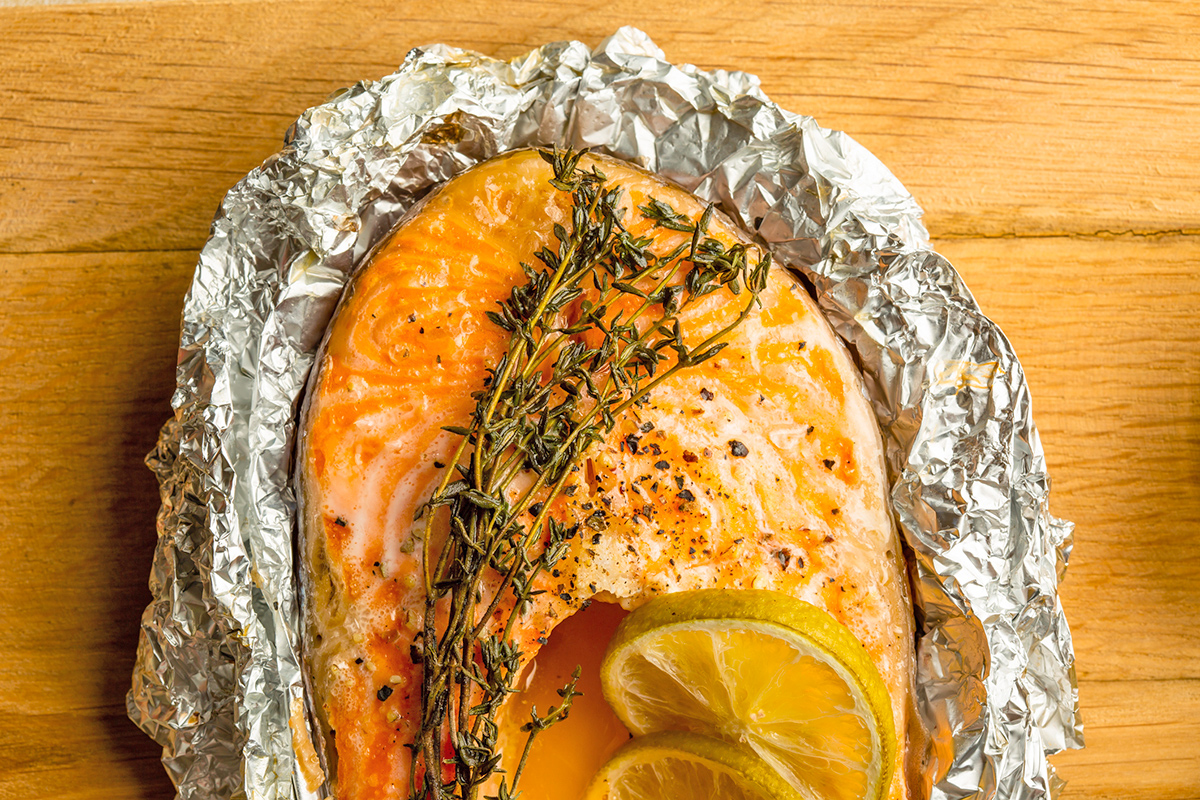Most people run their dishwasher after whipping up a delicious homemade dinner. However, some argue that you should run your dishwasher even earlier, as the appliance is said to be a surprisingly effective mechanism for cooking salmon and other types of fish that benefit from low heat and plenty of moisture — think trout, cod,…
We know this sounds perplexing, especially when you have a perfectly good stovetop and oven right there. But some home cooks have successfully tried cooking salmon in the dishwasher, and the positive results are hard to deny. Here’s how this unusual cooking tip works, in case you’d like to try it yourself.
Not Your Typical Recipe
Cooking salmon in the dishwasher is comparable to the sous vide method, where food is vacuum-sealed and then submerged in a temperature-controlled water bath. The heat and moisture inside the dishwasher are said to have a similar effect. To try out this unusual hack, you’ll need a defrosted salmon filet, a dishwasher, and aluminum foil. A 6-ounce piece of fish, about 1 to 2 inches thick, is best.
If you’re nervous about attempting this trick, you could remove dirty dishes from the dishwasher beforehand and forego detergent. Yes, a few brave souls — including the senior recipe editor of The Kitchn — have cooked the salmon and washed their dishes at the same time. Remarkably, they reported that no fishy smells emanated from the dishwasher, and no remnants of detergent were found on the filets.
More from our network
House Outlook is part of Inbox Studio, which publishes content that uplifts, informs, and inspires.
How To Cook Dishwasher Salmon
Tear off two sheets of aluminum foil, making each piece about 12 inches long. Place your salmon filet atop the first sheet of aluminum foil and season it how you normally would with salt, pepper, lemon, dill, and so on. Lay the second sheet of foil directly over the salmon. Then, use your fingers to tightly fold and crimp the two sheets of foil together, creating a secure, watertight seal that’s snug against the filet.
Now it’s time to cook — place the wrapped salmon on the top rack of the dishwasher and run a normal wash cycle. You don’t need to choose a special cycle, as the heat from a normal cycle should be more than enough to cook the fish. Once the cycle is complete, open the door and give it a whiff. If you wrapped the salmon tightly, the dishwasher should smell like a normal dishwasher, without any fishy notes.
Now, unwrap the salmon and put it on a plate. You might notice a little moisture, but that’s just from the fish cooking (assuming you wrapped it tightly). Before eating, give it a quick whiff to make sure you can’t smell any detergent, and use an instant-read thermometer to confirm it’s cooked to an internal temperature of 145 degrees Fahrenheit. Assuming it is, the salmon filet should be moist and ready to be enjoyed — as odd as this all sounds.


The Risks Involved
This hack has been making the rounds since 1975, when actor Vincent Price demonstrated it on The Tonight Show Starring Johnny Carson. That said, there are several risk factors to consider. If the fish does not reach the USDA’s safe minimum internal temperature, you face the danger of food poisoning. Additionally, not all dishwasher models reach the same temperature or have the same run time on the normal cycle. Detergent can also seep into foil packets if they are improperly sealed or hit with a powerful jet, causing cross contamination. Needless to say, dishwasher manufacturers do not recommend using these appliances for cooking because they were not designed for such a purpose.

















